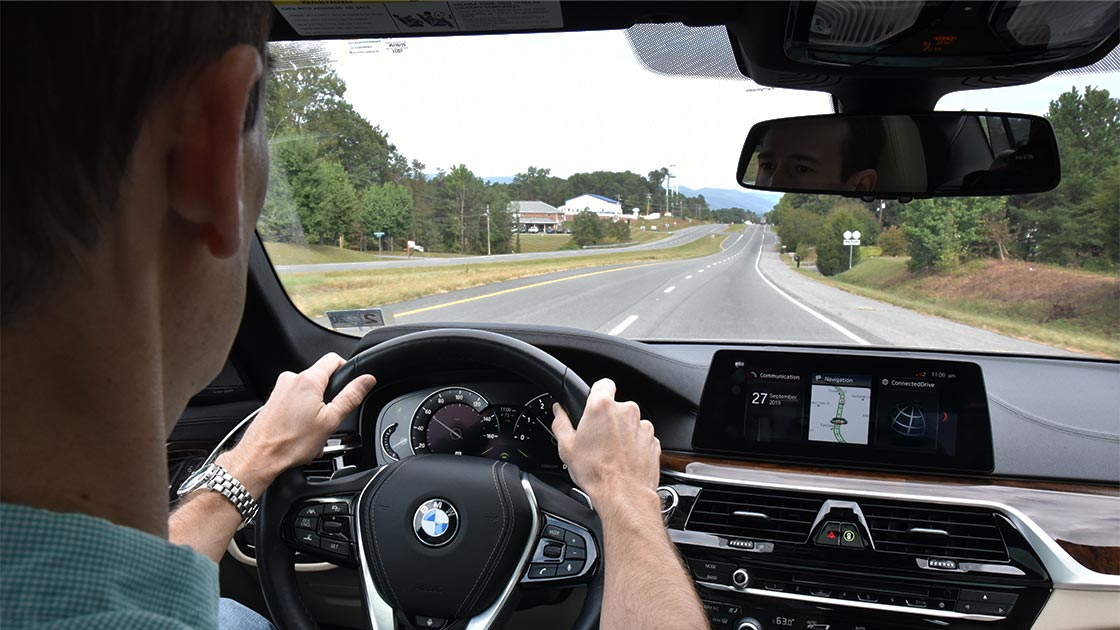Benefits from advanced driver assistance systems are growing, new HLDI study finds
April 16, 2020

Collision avoidance systems are eliminating more crashes as the technology improves, according to a new study of insurance claims data from various BMW models. However, the impact of partially automated driving remains murky.
In its latest study, the Highway Loss Data Institute compared insurance claims data from BMW vehicles for model years 2013-17. The analysis showed that the combination of improvements in front crash prevention and the addition of adaptive cruise control resulted in large reductions in the frequency of property damage liability and bodily injury liability claims. However, the further addition of lane centering as part of the company's partially automated driving package had little impact.
"The crash claim frequency reductions for BMW's Driving Assistance package are the largest we've seen from advanced driver assistance systems, which suggests crash avoidance may be delivering bigger benefits as the technology improves," says Matt Moore, senior vice president of HLDI. "The lane centering that comes in the 'plus' package doesn't seem to augment these benefits. That may be because the system is only intended for use on freeways, which are comparatively safer than other roads, and only works when the driver switches it on."
For this study, HLDI analysts compared the claims data associated with four different BMW crash avoidance packages. The first one combined forward collision warning and lane departure warning. A second included those features as well as front automatic emergency braking (AEB). The Driving Assistance package added adaptive cruise control. Driving Assistance Plus includes all those features as well as lane centering and front cross-traffic alert, pushing it further along the continuum of automated driving into what is known as Level 2 automation. The highest level of automation available in production vehicles today, Level 2 still requires active supervision by the driver.
For each package, HLDI looked at the impact on the rate of collision, property damage liability and bodily injury liability claims per insured vehicle year. Collision claims relate to the cost of repairing the insured driver's vehicle. Property damage liability claims are for repairs to the other vehicle involved in the crash when the insured driver is determined to be at fault. Bodily injury liability claims are for injuries to other people caused by the insured driver.
Three of the four crash avoidance packages were associated with reductions in claim rates under the three coverages.
The combination of forward collision warning, lane departure warning and AEB was associated with a 5 percent reduction in the frequency of collision claims, an 11 percent reduction in the frequency of property damage claims and a 16 percent reduction in the frequency of bodily injury claims.
The Driving Assistance package — which included upgraded versions of those features and also adaptive cruise control — reduced collision, property damage and bodily injury claim rates by 6 percent, 27 percent and 37 percent, respectively. For this package, the reduction in collision claim frequency was not statistically significant.
The claim frequency reductions associated with the Driving Assistance Plus package, which added lane centering and front cross-traffic alert to the Driving Assistance package, were not statistically different from those seen with Driving Assistance.
"The important thing here is that both of the advanced systems were associated with large reductions in claim frequency and reductions in overall losses," Moore says. "But the specific impact of adding lane centering and a front cross-traffic alert isn't clear."
BMW's most basic package, which includes only forward collision warning and lane departure warning, was associated with a 2 percent increase in the frequency of collision claims, a 5 percent increase in the frequency of property damage claims and an 11 percent increase in the frequency of bodily injury claims. None of these results was statistically significant, and they differed from HLDI's studies of similar systems from other manufacturers.
The findings are based on a total exposure, or sample size, of nearly 6 million insured vehicle years. The exposure for the various packages varied from around 550,000 insured vehicle years for forward collision warning with AEB to about 120,000 insured vehicle years for Driving Assistance Plus and around 30,000 for ordinary Driving Assistance and forward collision warning without AEB.
The large exposure of Driving Assistance Plus makes this study by far the broadest examination of the impact of systems that combine speed control with lane centering on insurance losses. HLDI also recently studied a similar system from Nissan — ProPilot Assist — but that study was based on much smaller exposure.
Claims data from the 2017-18 Nissan Rogue showed that ProPilot was associated with a 1 percent reduction in collision claim frequency and a 12 percent reduction in property damage liability claim frequency.
The exposure of ProPilot in the Rogue was just under 9,000 insured vehicle years, so the results were not statistically significant.
"Because the ProPilot study was too small for us to be very confident in the numbers, we still don't know the incremental benefit associated with lane-centering systems," says Moore.
BMW's Driving Assistance Plus and Nissan's ProPilot can't be compared directly, because each operates differently and includes a different suite of features along with the core elements of forward collision warning, AEB, adaptive cruise control and lane centering.
Impact of BMW advanced driver assistance features on insurance claim frequency